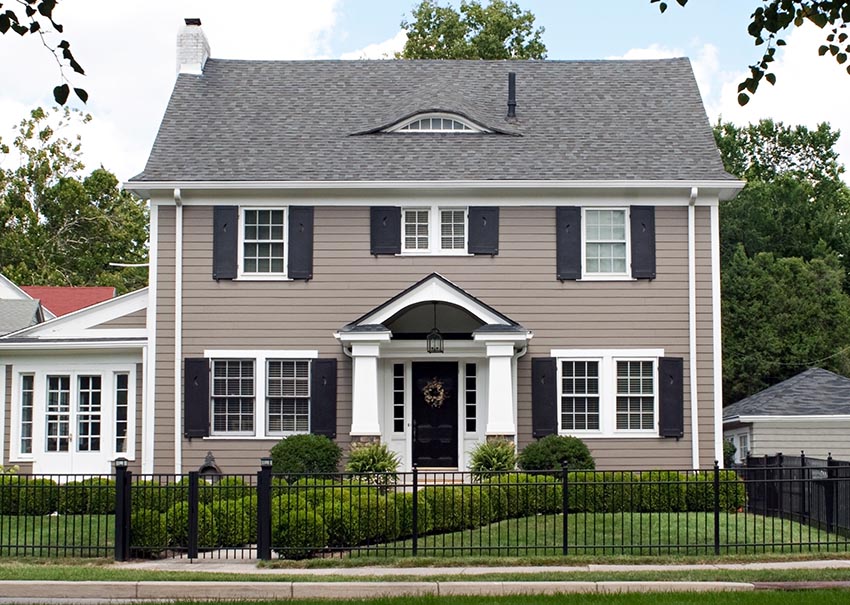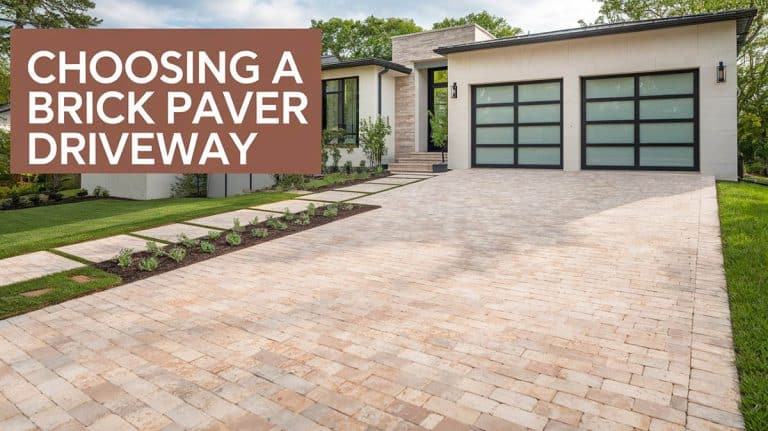What’s the Standard Rain Gutter Downspout Size & How To Calculate It?
Water damage is every homeowner’s worst nightmare. While property owners can safeguard their interiors with advanced weather sealing and waterproofing technologies, heavy downpours can still wreak havoc on the house’s exterior walls. Rainfall can seep through unprotected walls or form a puddle at the base, undermining the house’s foundation. Thankfully, rain gutters and downspouts convey rainwater away from sensitive structures. These components safeguard the property and ensure a family’s abode and investment. But there’s a catch. One must pick the correct rain gutter downspout size to optimize the system’s advantages.
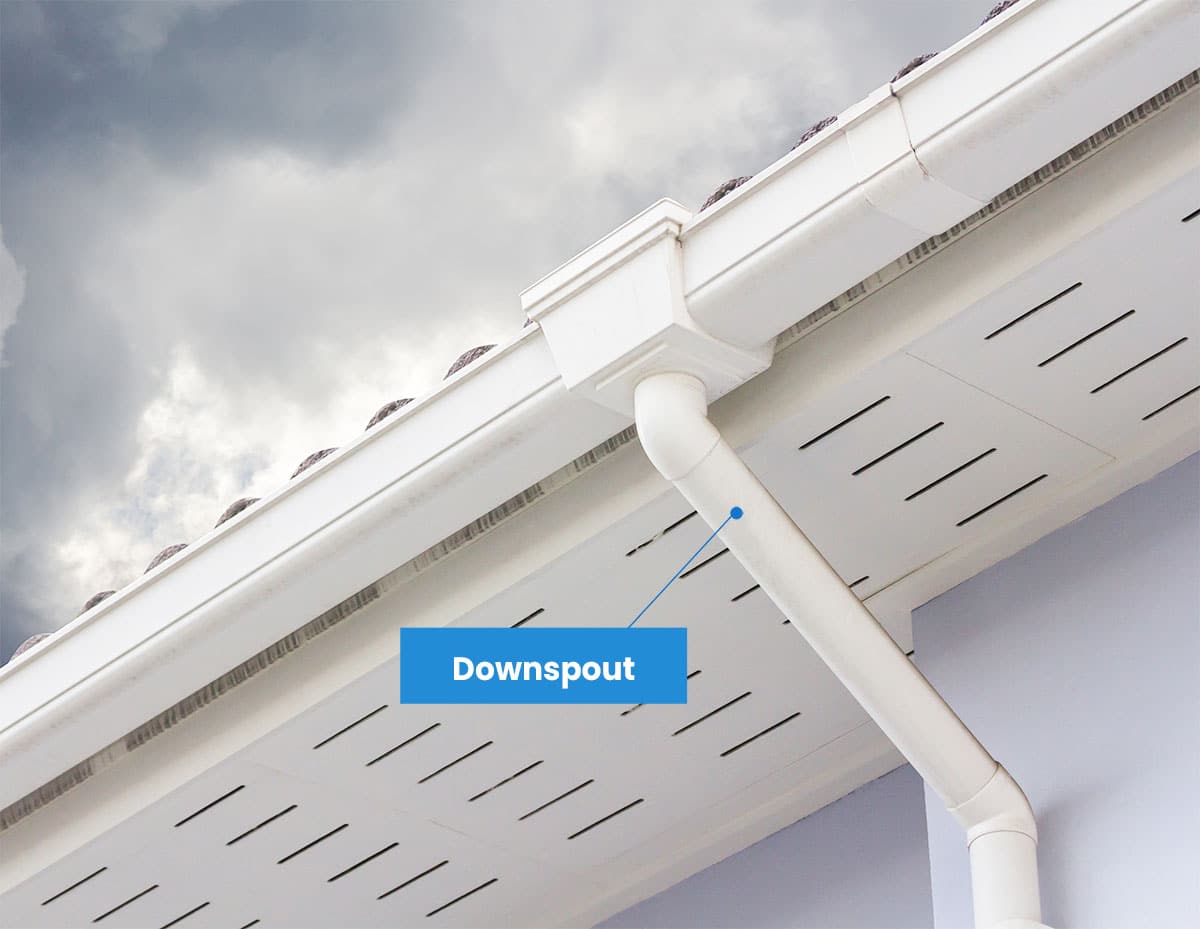
Standard Gutter Downspout Size
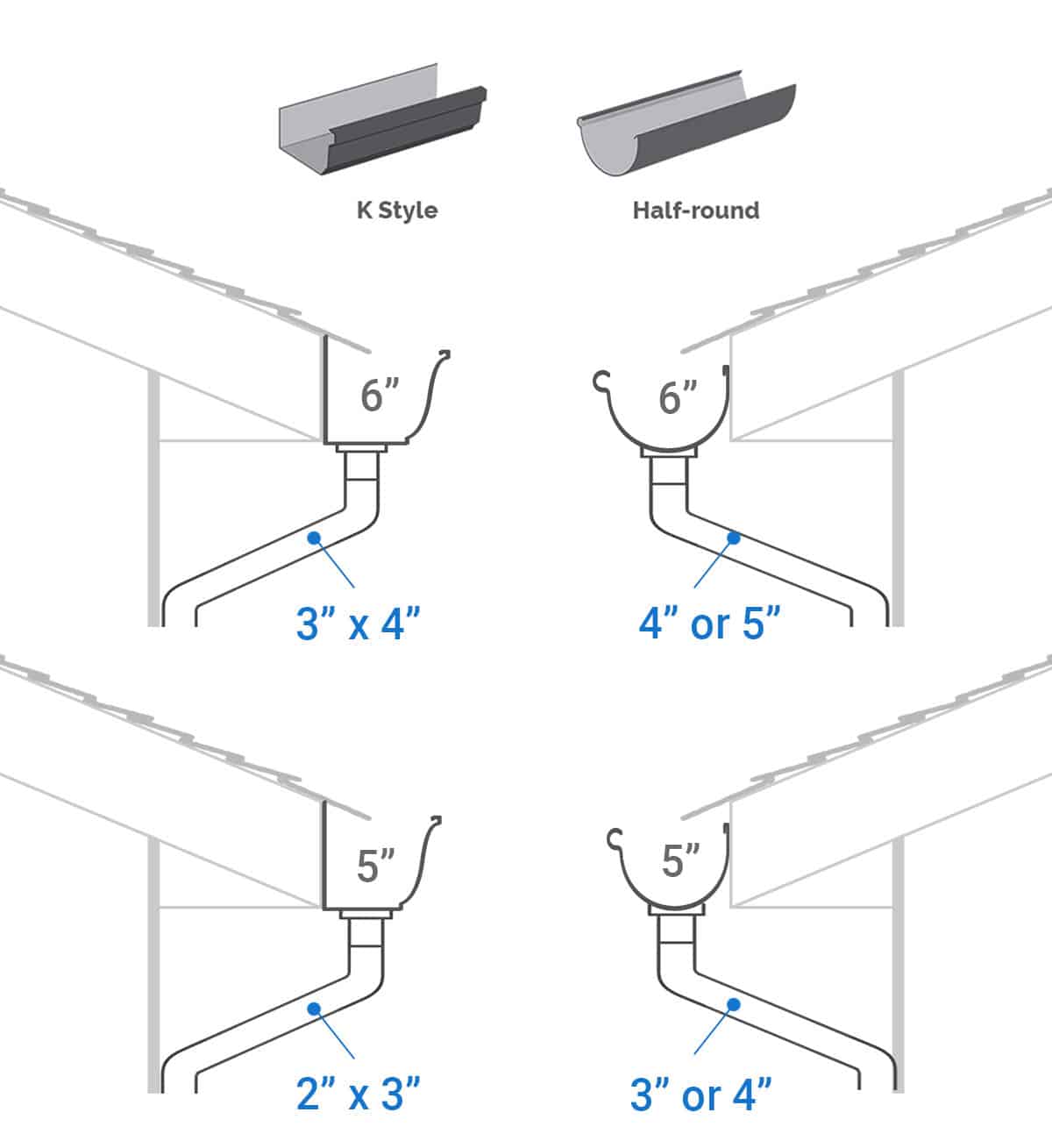
Gutters are essential to a sound building structure, collecting and conveying water away from the house or any building. These fixtures can be as narrow as 4 inches (10 centimeters) across or as broad as 7 inches (18 centimeters). However, most engineers, project managers, and contractors recommend a 5- or 6-inch (13 or 15-centimeter) unit to accommodate water and protect the property.
The measurements vary depending on the gutter type.
• K-style
Many modern homes and buildings opt for a K-style system, resembling the letter “K” when viewed from the side (or across). They have a vertical back unit, a flat bottom panel, and a multi-angled front section. K-style systems can accommodate more water than semi-circular or half-round types, making them the obvious choice in rainy locations. Sadly, their angles or corners can make cleaning and maintenance tedious.
• Half-round
Imagine a tube cut in half lengthwise, producing a semi-circular tube. That’s a half-round gutter. It accommodates less water than the K-style because of its round shape. The good news? It’s a space saver and can give any structure a mid-20th-century vibe. The bad news? They are trickier to install and best reserved for seasoned contractors.
Size for 6” Gutter
Downspout sizes for 6-inch gutter systems vary depending on the style or type (K-style vs. half-round).
For example, a 6-inch K-style unit can accommodate a 3-inch by 4-inch (7.6 x 10 centimeters) downspout. On the other hand, a half-round gutter will do great with a 4- or 5-inch diameter circular or round downspout.
Size for 5” Gutter
Like 6-inch units, 5-inch gutter systems require varying downspout sizes depending on the style. K-style options need a 2-inch by 3-inch downspout, while half-round versions will fit a 3- or 4-inch-diameter downspout.
How to Calculate Gutter and Downspout Size
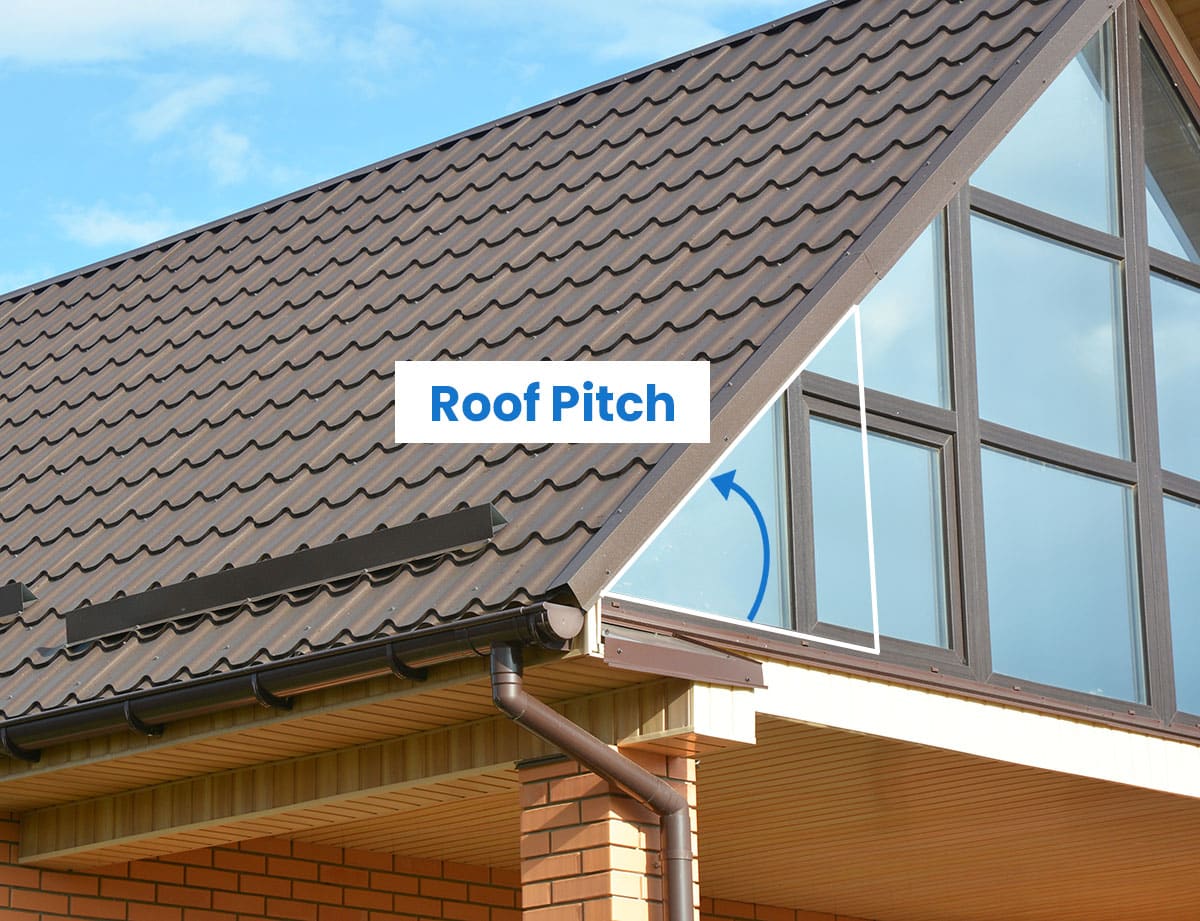
Sizing gutters and downspouts requires some calculation, considering several factors like roof surface area, pitch, and rainfall.
• Roof Surface Area
Determine the roof’s surface area by multiplying each section’s width and length dimensions. It isn’t a problem if the roof is a traditional rectangle. Hence, you might want to divide the roof into rectangular panels, measure their dimensions, and combine them to obtain the roof’s surface area.
• Roof Pitch
Extend a footlong ruler from the roofline toward the wall, ensuring it’s parallel to the ground. Position another ruler or tape measure from the 12th-inch mark and elongate it upward. Locate the value defining the rooftop. For example, suppose the roof height is 3 inches from the 12-inch mark. The roof pitch is 3:12, with a pitch factor of 1.0308.
Next, multiply the roof pitch factor by the roof surface area. For instance, suppose you have a 25-foot by 50-foot roof and a 3:12 pitch. The adjusted roof surface area is 1,288.5 square feet.
• Average Rainfall
Log into the National Oceanic and Atmospheric Administration’s website and determine your location’s 5-minute maximum rainfall. Alternatively, local weather stations can provide the information. Multiply this number by the adjusted roof surface area in Step 2.
For example, suppose your location’s rainfall intensity is 3.7. Multiply 3.7 by 1,288.5 square feet (the example above) to get 4,767.45 square feet. This number is the roof’s rainfall-adjusted roof size (RARS). Here’s a guide to using this metric.
• If RARS is ≤2,500, use a 5-inch half-round
• If RARS is ≤3,800, use a 6-inch half-round
• If RARS is ≤5,500, use a 5-inch K-style
• If RARS is ≤7,900, use a 6-inch K-style
You can also try out our gutter calculator tool to give you an overall estimation of the materials needed and their cost.
What Size Hole Saw for Gutter
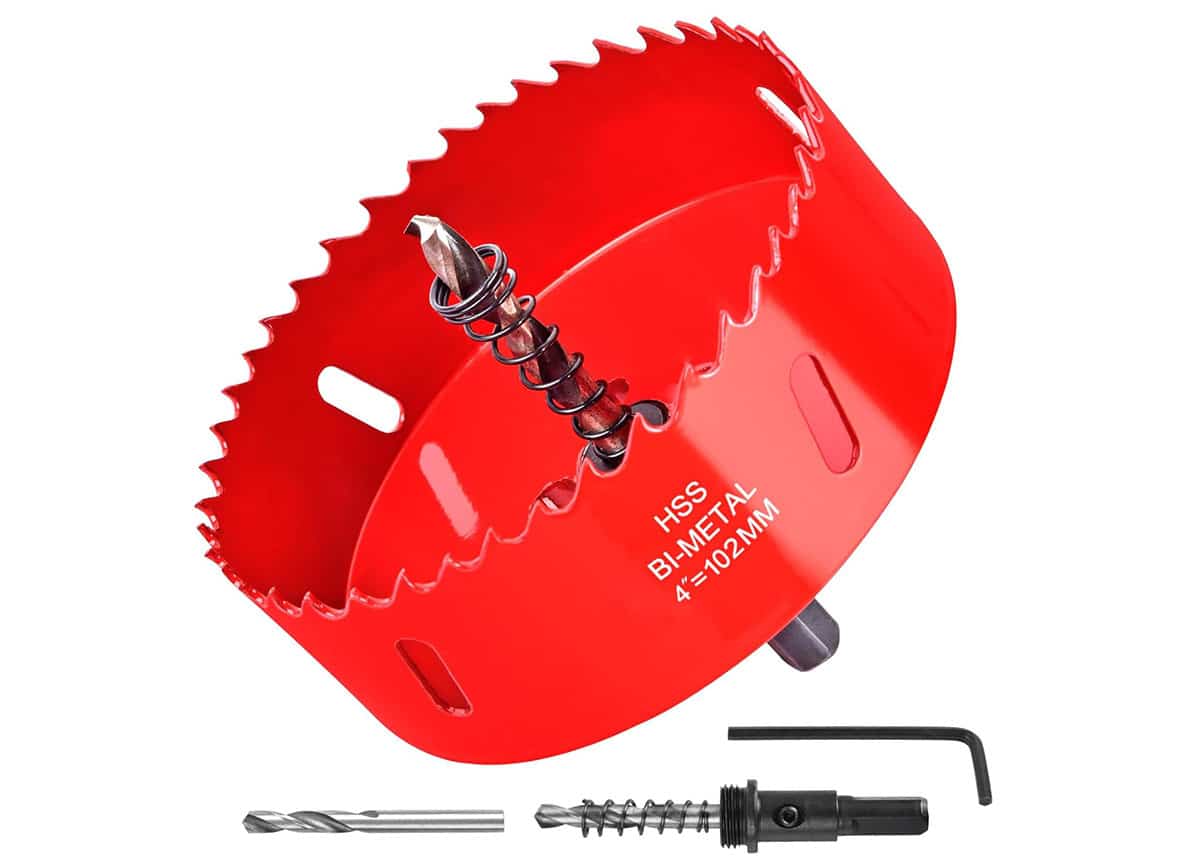
Gutters run horizontally along the roof’s length, while downspouts have a vertical orientation along the house’s sides or corners. Contractors must create an opening between these elements to produce a seamless water conveyance system. Hence, a hole is necessary to allow rainwater to move from the gutters to the downspouts and the ground.
Most contractors use a gutter outlet saw with a circular bit approximating the hole. Hence, a 3-inch round downspout will require a 3-inch hole saw to cut an opening in the gutter. However, most manufacturers often have various hole-saw sizes. Homeowners and project contractors must pick the saw size commensurate to the required gutter opening.
What is the Best Downspout Shape?
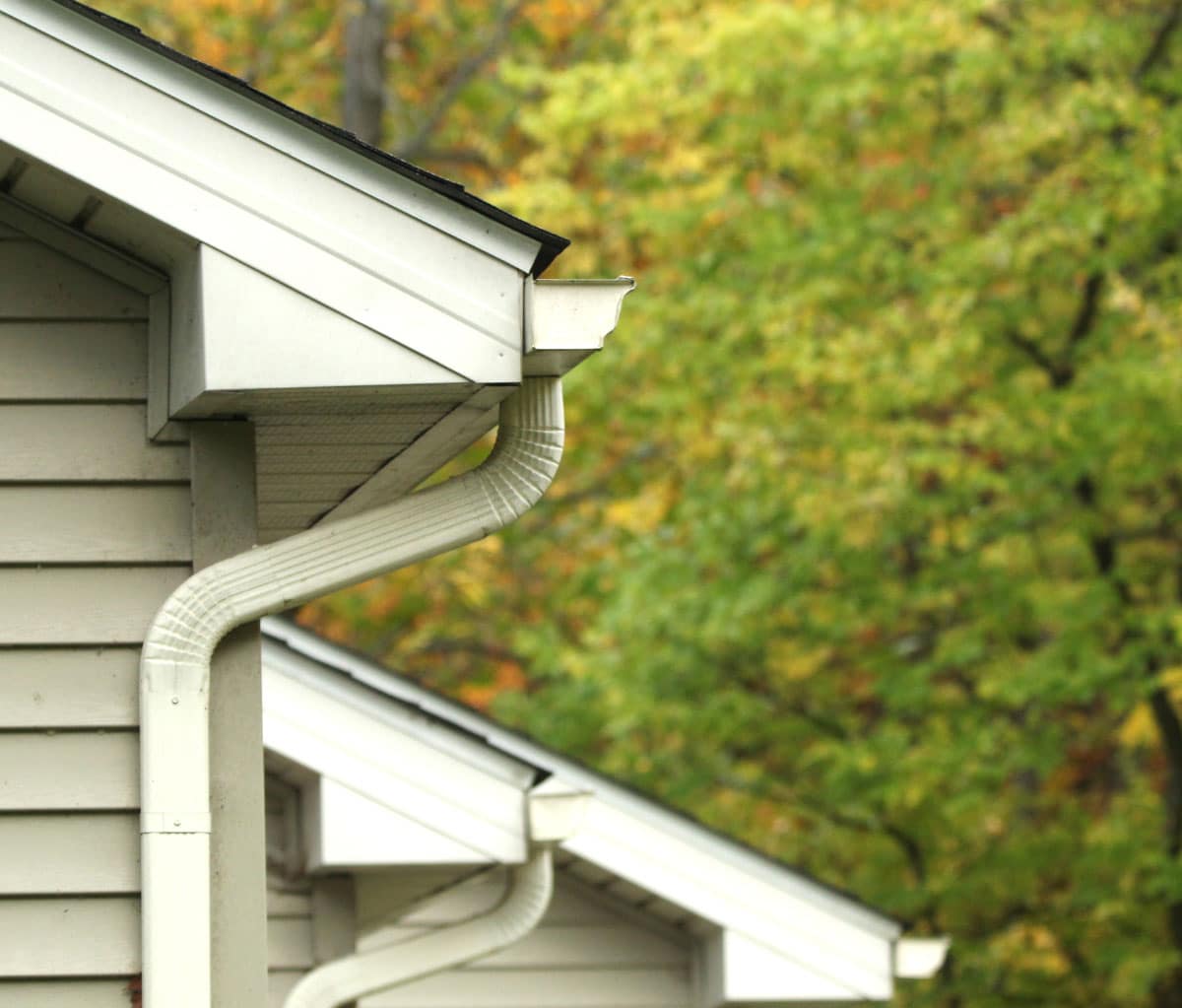
No single downspout shape is best for all houses, buildings, and other structures requiring a comprehensive water management system. Everything hinges on the property owner’s needs and environmental factors.
For example, rectangular downspouts are perfect for homeowners who want sleek modernity in their properties. These systems are also ideal for families living in rainy locations because the shape can accommodate more water.
Meanwhile, round or circular downspouts evoke 1950s nostalgia, giving the property a more rustic vibe. Unfortunately, its curves translate to less water accommodation, making it unsuitable for houses with heavy rainfall.
While rectangular downspouts can handle more rainwater than circular options, families living in areas with heavy rainfall might want to consider corrugated downspouts for best flow around eaves and overhangs.
What is the Cost Difference between 5 and 6-inch Gutters?
Unsurprisingly, 6-inch gutters are slightly more expensive than 5-inch versions, ranging from as low as half a dollar per foot to as high as a dollar. However, the total cost of gutter and downspout installation might reveal a different story.
For example, suppose you have a 40-foot-long gutter system requiring two 15-foot downspouts for a combined length of 70 feet. Let’s assume a 5-inch gutter costs $8/foot. That brings the total to $560.
Suppose you use a 6-inch version. In such cases, you only need a single downspout for the 40-foot gutter. Hence, you only require 55 feet for the project, producing an overall cost of $467.50 (at $8.50/foot gutter price).
A 6-inch gutter might look costlier than a 5-inch version on a per-foot basis. However, project-wise, this system is more practical.
Visit our gutter measurement guide for more related content.

